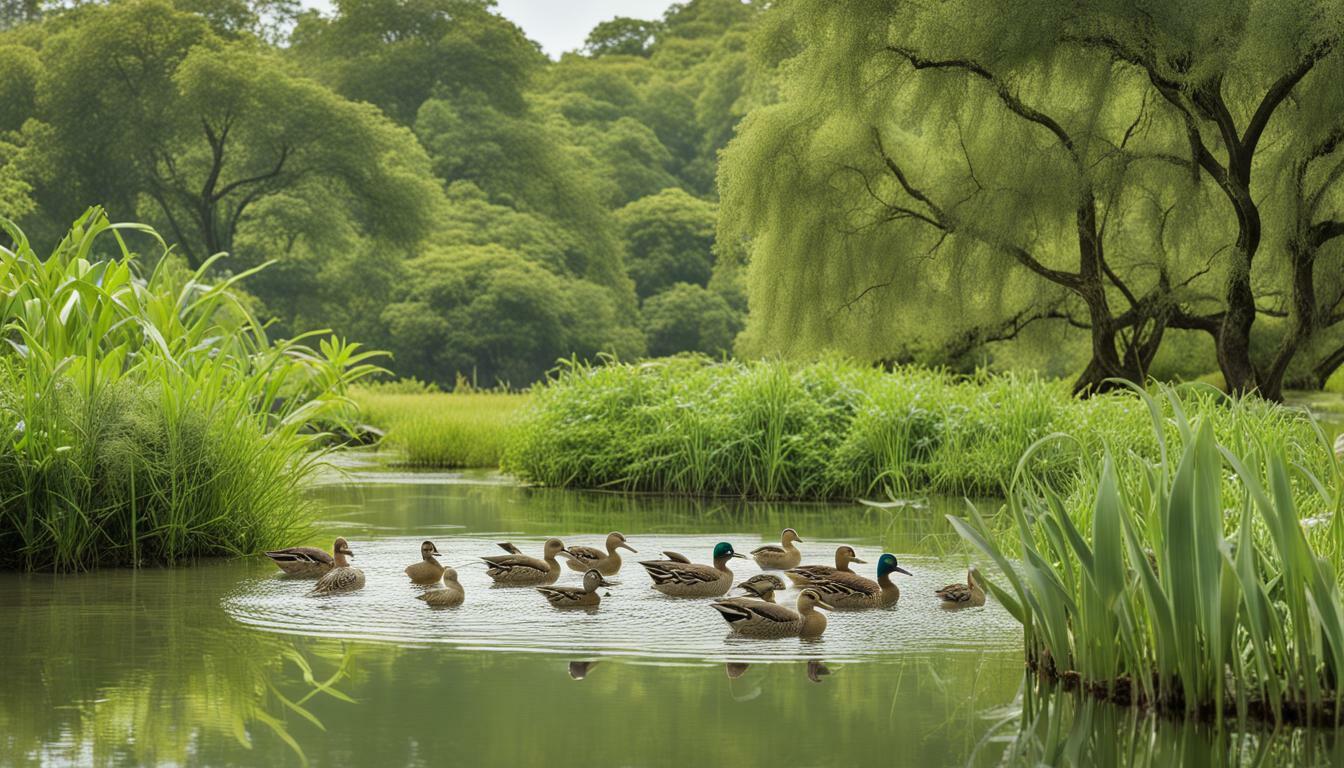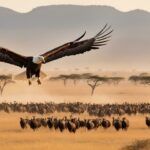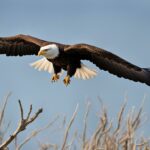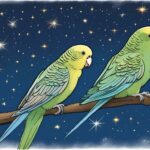Ducks are known for their unique feeding habits and diverse diet that can include everything from plants to insects and small animals. But do ducks eat tadpoles? This is a commonly asked question and one that deserves a closer look.
If you’re interested in learning more about duck dietary habits, their feeding behaviors, and whether or not they consume tadpoles, read on.
Key Takeaways:
- Ducks have a diverse diet that can include plants, insects, and small animals.
- The feeding habits of ducks are influenced by their environment and natural behaviors.
- While ducks may eat tadpoles, this behavior is not common and depends on various factors.
- The role of tadpoles in the duck diet and their importance in maintaining a balanced ecosystem should be considered.
Understanding Duck Diets: What Do Ducks Eat?
As wildlife creatures, ducks have a diet that is primarily composed of natural food sources. These can include aquatic plants and animals found in wetlands, rivers, and ponds. The specific foods that ducks eat may vary depending on their location, habitat, and season; however, there are a few staples that remain consistent throughout their diet.
Aquatic Plants: Ducks love to munch on aquatic plants, especially those that grow near the surface of the water. These can include cattails, water lilies, and duckweed. Not only do these plants provide a source of food for ducks, but they also offer a place for them to hide from predators.
Insects and other Invertebrates: Ducks also enjoy eating a variety of insects and other invertebrates. These can include snails, worms, and even small crustaceans like shrimp. These food sources are usually found in or around the water.
Fish: Some ducks will also eat fish, especially those that are small enough to swallow whole. However, fish are not a primary food source for most ducks, and they are more likely to eat fish during the winter months when other food sources are scarce.
Grain: Domestic ducks that are raised on farms will often be fed a diet that includes grain, such as corn or wheat. However, this is not a natural food source for wild ducks and is not recommended for them.
Overall, the diet of a duck is diverse and largely depends on their location and the time of the year. By understanding what ducks eat, you can better appreciate these fascinating creatures and their role in the ecosystem.
The Feeding Habits of Ducks: Insights into Their Eating Behavior
Ducks are a common sight in ponds and other natural habitats, where they can be seen foraging for food. Their feeding habits can provide insights into their behavior and lifestyle. In this section, we will explore the feeding habits of ducks, including their behavior in ponds and natural habitats.
Feeding habits of ducks can vary depending on the species and their environment. Some ducks prefer to find food on the surface of the water, while others dive underwater to forage. They may consume a variety of foods, including grasses, seeds, insects, and small invertebrates.
In ponds, ducks can often be seen swimming and searching for food. They will use their beaks to filter through the water and mud to find small organisms to consume. This behavior is natural for ducks and is essential for their survival.
In their natural habitats, ducks will often forage on land for grasses and seeds. They will also search for food in shallow water and along the edges of rivers and lakes. For some species of ducks, their diet can include aquatic plants and algae, which they will consume by dipping their heads underwater.
It’s important to note that ducks will adjust their feeding habits based on their environment and food availability. For example, in the winter months, when food is scarce, ducks may rely on agricultural fields or even bird feeders for their food source. This adaptation is another example of how ducks have evolved to survive in their natural habitats.
Ducks and Tadpoles: Do Ducks Really Eat Tadpoles?
When it comes to the question of whether ducks eat tadpoles, the answer is not a clear-cut yes or no. While ducks are known to consume a variety of aquatic creatures, including fish, snails, and insects, their affinity for tadpoles is not universal.
In fact, the feeding habits of ducks can vary depending on a number of factors, such as the availability of other food sources and the location of their habitat. Ducks in natural, open ponds may be more likely to eat tadpoles than those living in man-made environments, where their diet may be supplemented with other foods.
Furthermore, the species of duck may also play a role in their dietary preferences. Some ducks, such as mallards, have been observed consuming tadpoles more frequently than others, while other species, such as buffleheads, are less likely to eat them.
While it’s clear that ducks are opportunistic feeders and will consume tadpoles if they are available, it’s important to note that this does not necessarily indicate a significant impact on overall tadpole populations. In fact, ducks may actually serve as a natural form of population control for tadpoles in some cases.
Overall, while ducks may occasionally eat tadpoles, it is not a significant component of their overall diet. So, if you’re feeding ducks in ponds, there’s no need to worry about supplying tadpoles specifically as part of their diet.
The Role of Tadpoles in the Duck Diet: Factors to Consider
Ducks are omnivores, eating a varied diet of both plant and animal matter. While they are known to consume a wide range of aquatic creatures, including snails, insects, and small fish, the question of whether ducks eat tadpoles remains a topic of debate among wildlife enthusiasts.
The potential benefits of tadpoles in a duck’s diet are many. For example, they are a good source of protein and can provide essential nutrients that ducks need to maintain their health. Additionally, tadpoles can help reduce the populations of certain invasive species, such as mosquitoes and other insects that can be harmful to humans and other wildlife.
However, there are also drawbacks to consuming tadpoles. For one, some species of frogs and toads are endangered, making it important to protect their populations. Additionally, some tadpoles may carry harmful parasites or pathogens that could pose a risk to ducks or other animals that consume them.
Factors that influence whether or not a duck will eat tadpoles include the availability of other food sources, the abundance of tadpoles in a given area, and the natural feeding behaviors of the particular species of duck. In some cases, ducks may eat tadpoles only when no other food is available.
It’s also important to note that while ducks may consume tadpoles, they are just one small part of their overall diet. Ducks require a variety of different nutrients to maintain their health, and their diet can vary depending on a number of different factors, including the time of year, their natural habitat, and the availability of food sources.
In conclusion, while it’s possible that ducks may consume tadpoles as part of their diet, it’s not something that they rely on exclusively. It’s important to consider both the benefits and drawbacks of consuming tadpoles, as well as the many other factors that can influence a duck’s dietary habits.
Duck Conservation: How Tadpoles Fit into Wildlife Conservation Efforts
Ducks play an important role in maintaining a balanced ecosystem. They are not only a vital food source for many predators, but they also help control the populations of insects and other organisms. However, ducks themselves require a varied diet to thrive, and tadpoles can be an important part of their food source.
But why is this important for wildlife conservation efforts? First, understanding the dietary habits of ducks can help wildlife experts better manage and protect duck populations. By ensuring that ducks have access to the proper food sources, we can help maintain healthy populations of these important organisms. Additionally, protecting the habitats where ducks and tadpoles thrive, such as wetlands and ponds, can have a positive impact on many other organisms that rely on these ecosystems.
Conserving the relationship between ducks and tadpoles is also crucial for maintaining a healthy balance of species within an ecosystem. For example, if duck populations were to decline due to a lack of food sources, tadpole populations may increase rapidly and disrupt the balance of other organisms within their habitat. Therefore, protecting the dietary habits of ducks, including their consumption of tadpoles, is essential for maintaining a healthy ecosystem.
Overall, understanding the role that tadpoles play in the diet of ducks is critical for wildlife conservation efforts. By protecting both ducks and tadpoles, we can help ensure that these vital organisms continue to thrive within their natural habitats.
Other Factors Affecting Duck Diets: Seasonal Variations and Human Interaction
Duck diets can be influenced by a variety of factors, including seasonal changes and human interaction. During the winter months, ducks may have a harder time finding their natural food sources, such as aquatic plants and insects, so they may resort to alternative food sources, including tadpoles, to survive.
Human interaction can also have an impact on duck diets. For example, ducks in urban environments may have access to human-provided food, such as bread, which can be harmful to their health. Eating too much bread can lead to malnutrition and cause digestive problems, which can ultimately affect their ability to hunt for natural food sources.
To ensure the health and well-being of ducks, it’s important to avoid feeding them human food, and instead, let them hunt for their own natural food. Additionally, it’s essential to maintain a balanced ecosystem and preserve the natural habitats of ducks, including ponds and wetlands, to ensure they have access to their natural food sources all year round.
Conclusion
After exploring the diverse food preferences and feeding habits of ducks, it is clear that while tadpoles may be a part of a duck’s diet, they are not a significant portion. Ducks are omnivorous and consume a variety of foods including insects, worms, small fish, and aquatic plants. Their diet varies depending on the season and their natural habitat.
While it is important to maintain a balanced ecosystem and protect wildlife, there is no need to be concerned about ducks consuming tadpoles in ponds or wetlands. Their impact on the tadpole population is minimal and they play an important role in controlling insect populations and maintaining the health of aquatic habitats.
Remembering the Importance of Conservation Efforts
It is important to remember the critical role that both ducks and tadpoles play in maintaining the health of our ecosystem. Take proactive measures to support wildlife conservation efforts and preserve our natural habitats.
Whether you enjoy birdwatching or simply appreciate the beauty of nature, taking steps to protect wildlife and their habitats is essential. By maintaining a balance in the ecosystem, we ensure that future generations can enjoy the same benefits that we do today.
Are Tadpoles a Part of Ducks’ Diet?
Recent research has shed light on ducks’ watermelon preferences revealed, raising doubts about whether tadpoles are on the menu. While ducks are known to consume a variety of aquatic plants, insects, and small aquatic invertebrates, the question of tadpoles remains unanswered. Further investigation is needed to determine whether tadpoles are indeed part of ducks’ diet or if they have particular dietary preferences.
FAQ
Q: Do ducks eat tadpoles?
A: Yes, ducks do eat tadpoles as part of their diet.
Q: What do ducks eat?
A: Ducks eat a variety of foods including insects, worms, small fish, plants, seeds, grains, and yes, tadpoles.
Q: How do ducks find and consume their food?
A: Ducks usually forage for food by dabbling in shallow water, where they can find aquatic plants, insects, and small aquatic organisms like tadpoles.
Q: Do ducks eat tadpoles in ponds and natural habitats?
A: Yes, ducks can consume tadpoles found in ponds and natural habitats.
Q: What factors influence whether ducks consume tadpoles?
A: The availability of tadpoles, the abundance of alternative food sources, and the specific dietary preferences of individual ducks can all influence whether or not they consume tadpoles.
Q: How do ducks and tadpoles contribute to wildlife conservation efforts?
A: Ducks and tadpoles play important roles in maintaining a balanced ecosystem. Ducks help control populations of aquatic organisms, including tadpoles, which can prevent overpopulation and maintain healthy water systems.
Q: Can seasonal variations and human interaction affect duck diets, including their consumption of tadpoles?
A: Yes, seasonal changes can impact the availability of certain foods for ducks, which may affect their dietary habits. Additionally, human interaction and habitat alteration can also disrupt the natural food sources available to ducks, potentially influencing their consumption of tadpoles.










